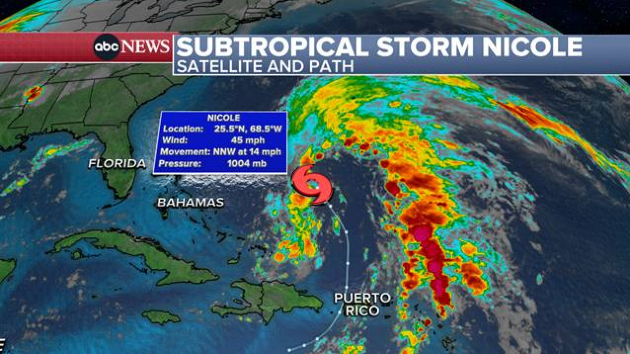
(NEW YORK) — A California mother whose son was shot and killed in 2019 by police during a mental health crisis has partnered with local officials to create a mobile task force to aid those struggling with mental illness.
Taun Hall’s son, Miles, began showing signs of possible mental illness during his teenage years. He would later be diagnosed with schizoaffective disorder and, as his symptoms progressed, Hall worried about Miles’ safety.
The fears were not unfounded: People with severe, untreated mental illness are 16 times more likely to be killed by police, according to Treatment Advocacy Center, a nonprofit based in Arlington, Va. Hall also worried about Miles as a Black man, which made him three times as likely as white people to be killed by law enforcement, according to a study by researchers at the Harvard T.H. Chan School of Public Health.
Hall reached out to law enforcement in her Walnut Creek neighborhood, a wealthy suburb a few miles from San Francisco, to alert them about her son’s mental health challenges. She also worked with her local mental health officer to open a channel of communication.
“I was trying to be preventive,” Hall said. “I was trying to get things handled before there was a problem.”
Miles’ condition worsened in 2019; he began experiencing delusions and sometimes referred to himself as “Jesus.” But he was 23, legally an adult, and Hall couldn’t force him to get help.
“You see your child going down a mental health kind of spiral… you can see the deterioration, but you can’t do anything to help him.”
When Hall saw Miles’ symptoms getting worse, she reached out to the mental health officer she’d been working with to aid Miles. Hall left a message for her, and called the local police department’s non-emergency line, trying to alert them to Miles’ condition in case her son encountered law enforcement. “I was like, ‘OK, if they know him, they’re gonna respond with care and compassion.’”
The next day, Miles was gardening with his grandmother. A neighbor loaned Miles a gardening tool, a long metal rod that resembled a crow bar. Miles began walking around with the rod, calling it his “staff from God.” He was walking around, saying he was Jesus, when he used the metal rod to break a sliding glass door at the family’s home, Hall said.
Miles came into the home and asked Hall and her husband to leave. They did, in an effort to de-escalate the situation, and Hall called 911. Hall told the 911 operator Miles had a metal rod.
About 10 minutes later, a neighbor called to tell Hall that Miles had been shot. According to police reports, officers responded to several calls that afternoon, not just Hall’s call.
Miles had been pounding on a neighbor’s door and several residents called police. Police footage shows officers calling Miles by his name, shouting at him to “stop” as he approached them, holding the metal rod. Despite their orders, Miles kept moving forward. Then, officers fired a bean-bag round, meant to stop a suspect but not do permanent damage. When that didn’t stop Miles, officers shot him several times with their handguns, killing him.
“The worst fricking moment of, you know, our lives was right then, right there.”
An internal investigation cleared the officers of wrongdoing.
In the years since her son’s death, Hall has worked with Assemblywoman Rebecca Bauer-Kahan to try to stop other families from experiencing the same tragedy. Hall realized that what would have been helpful to her was having someone to call who wasn’t the police. “We needed a different number to call. We needed a different response.”
Replacing police with mobile response units to address low-level calls — like those about mental health — is happening in many cities around the country. Oakland, California, began testing a pilot program in April. The new task force, called MACRO — Mobile Assistance Community Responders of Oakland — was created to provide a first-response option that was separate from the police.
Oakland residents can access the task force by calling 911 and being connected to a special MACRO dispatch center. The task force’s interactions with the public come from what they call “on-view” calls. These take place when the team sees someone who may need assistance and offers resources and basic medical attention.
“If someone’s in need and you can put your eyes on them, you can stop and help them,” said program manager Elliott Jones. “And even if you’re just giving them a bottle of water and sitting them up straight, that’s maybe more compassion they’ve gotten and God knows how long.”
Each MACRO team has an EMT, a crisis intervention specialist and a minivan packed with supplies. The team doesn’t just address low-level mental health concerns. It also helps with homelessness, public intoxication and behavioral issues, among others.
Hall worked with Bauer-Kahan on a bill to expand funding for mental health services in California and Gov. Gavin Newsom signed the bill at the end of September, locking in an 8-year roadmap to fund mobile crisis units across California.
Accessible through the national suicide and crisis line — 988 — these services will connect users to crisis intervention specialists, counselors and peer support workers. Hall says that this is the response that could have helped her son.
“I can’t ever take back a phone call,” said Hall, referring to the 911 call she made the day her son was killed. “I can’t ever take back the officer shooting him…but I can take my pain to purpose and make sure this doesn’t happen to somebody else.”
If you are experiencing suicidal, substance use or other mental health crises please call or text the 988 Suicide & Crisis Lifeline. You will reach a trained crisis counselor for free, 24 hours a day, seven days a week. You can also go to 988lifeline.org.
Copyright © 2022, ABC Audio. All rights reserved.








